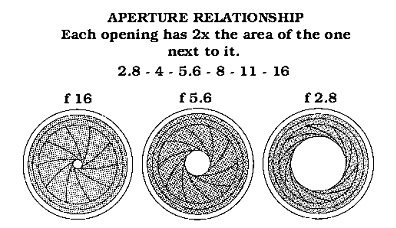
Narrow ApertureĪt the other end of the scale is a narrow aperture. This photo uses a large aperture, and that allowed a fast enough shutter speed to capture this dancer mid air.

It’ll help you keep your subject focused. Look to use the camera’s focus tracking function. When you get the action photo right with the large aperture it will look amazing. This can mean the subject moves out of the focal sweet spot. That’s due to the shallow depth of field, and because the main subject is moving in a dynamic environment. That wide aperture allows light to enter the camera quickly enough to ensure a fast shutter speed is achievable.Īction photography often means sport, which can make using a large aperture tricky. Action PhotographyĪction photography is about fast shutter speeds, but wide apertures play a part here as well. Get a good quality 50mm lens with a large aperture and you’ll be set for most low light settings. That said, without a large aperture you’ll often be struggling for light, especially when it comes to night street photography. It’s true that cameras perform better at high ISOs these days, somewhat mitigating the need for a large aperture. Low Light PhotographyĪ good fast lens is a must have when it comes to low light. Photographing at night will almost certainly mean using a large aperture. Then cut the shape you desire into the black circle and make sure it is in the center of your black disc of paper. To do this you’ll need to cut a black circle from some paper. You can create shaped bokeh such as hearts, stars or electric bolts. It’s possible to do even more with bokeh. When there are points of light this will manifest itself in the form of light globes. When the background is a line of trees, a tunnel, or street lights, you’ll see a pleasant bokeh background. This might happen if the background is a simple blue sky. If there are no objects behind the main subject this area of the photo won’t be noteworthy. This area is often referred to by photographers as bokeh. If the main subject is sharp, there can be a large portion of the photo that isn’t. The subject will now pop out of the frame, and the background will be blurred. This works well when the subject is placed in the middle of a tunnel. This means a large aperture is perfect for subject isolation using focus. In this photo, the main subject is separated from the background through the use of a wide aperture. And the area in front and behind the subject will be out of focus. This will make only the main subject sharp. A large aperture will produce a shallow depth of field. This, for example, could be a person in a portrait photo.ĭepending on the aperture setting on your camera the area in front of and behind your focal point will also be in focus. When you focus your camera you’ll pick an area of the photo to focus on.

For some of the below effects to be in evidence you’ll need this aperture or even larger. The use of a wide aperture goes beyond how quickly light comes into a camera.Īn aperture of f/2.8 is considered a large aperture. One of the main effects of the wide aperture is the distinctive bokeh background you can see in this image.
#Small aperture vs big aperture iso
The other settings are ISO and shutter speed. An exposure value of 0 is considered correctly exposed. Exposure value – Aperture is one of the 3 settings that controls the exposure value.They can be as large as f/0.85! The largest aperture available on zoom lenses is f/2.8. The lens – Prime lenses will always have the largest apertures.

A large aperture would be f/1.8, while f/22 is considered small.


 0 kommentar(er)
0 kommentar(er)
